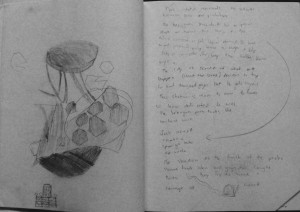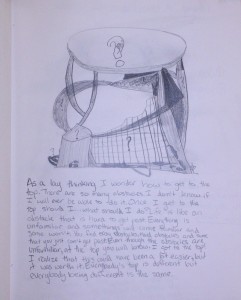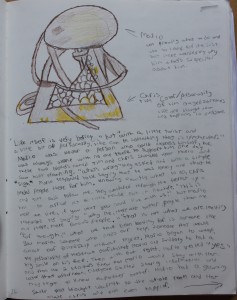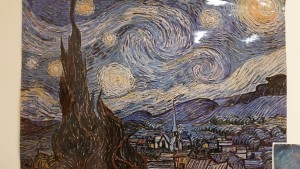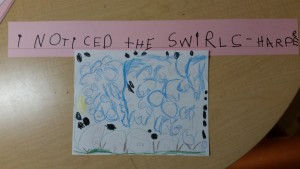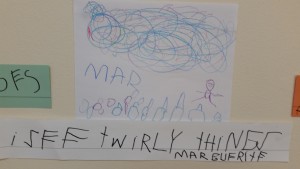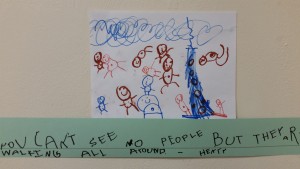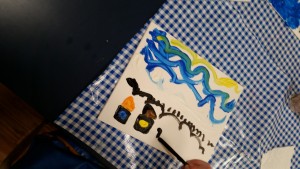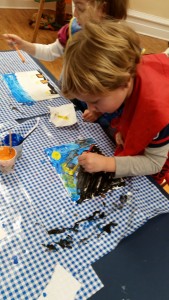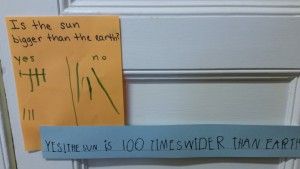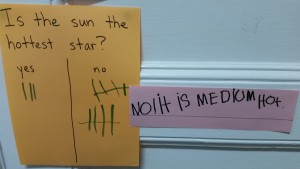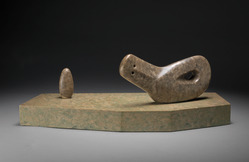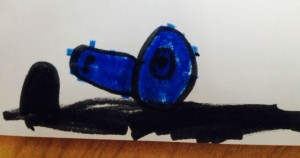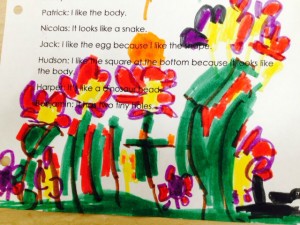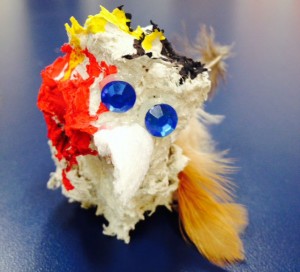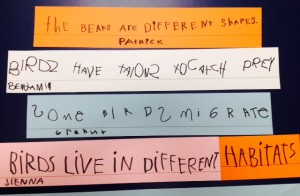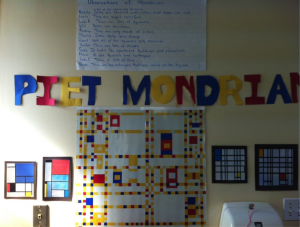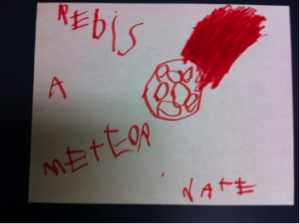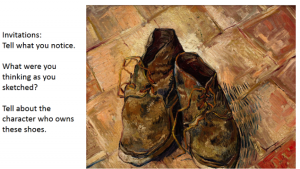Perspective is an essential narrative feature. Each page of a book, each scene with a character provides another way of seeing the story. In many texts, the narrative has recursive features of time and knowing. We see the story different when we have finished and look back. We see the story different when we are given another vantage point. We see the story from our perspective as we read.
Each perspective generates a narrative of seeing, feeling, and knowing. If this is the case, then the exercise of drawing a sculpted figure from different vantage points should generate unique insights (follow the link to see what the students drew). As with reading a narrative, we see what we are given and what we look for. So, I asked students to draw the image first and then describe the mood. The act of description calls forth their own knowledge and experience: How is this person standing? When I stand this way how do I feel? How have I seen this stance before? What does this stance communicate?
“[L]ost, lonely, depressed. It seems as if this man is outside and is alone and thinking to himself. He is in a situation (stuck) but doesn’t go for help. He is desiring something without reaching out”.
“Nonchalant. He is on his phone but it’s cold out so he has one hand in his pocket and is wearing a sweater and pants. He must have heard something so his head is turned in a casual way. He is not in any rush. Maybe he is waiting for a bus”.
“Confused, Pondering. Maybe he’s thinking. I watch this man, he’s thinking or looking for someone. He’s looking for me. He doesn’t know I’m right behind him”.
Each student brings their world to bear on their expression and interpretation. Students can discuss what they see and why with each other. Students can also look at the progression of their work. What did they think at first? How do the three perspectives construct a whole? Some students wonder why I would show the “same” object three times, suggesting nothing is different. This leads to further conversation and closer looking. What would we know if we only had one of these vantage points? A question like this brings the sense of perspective to the forefront.
But why do this exercise in an English class? Simply, it’s a story of reading. As we go through a book, we are building a sense of the story. The longer we read, the more we ‘see’, and soon, we are living with a story with various narrative strands linked. Each link has value. Some students will see this quickly. Others, will need more time. If we choose not to ignore this multiplicity, we allow change and growth to occur. Allowing room for the process of knowing and practicing this skill makes the classroom a rich environment of dialogue and discovery.
–James Shivers



